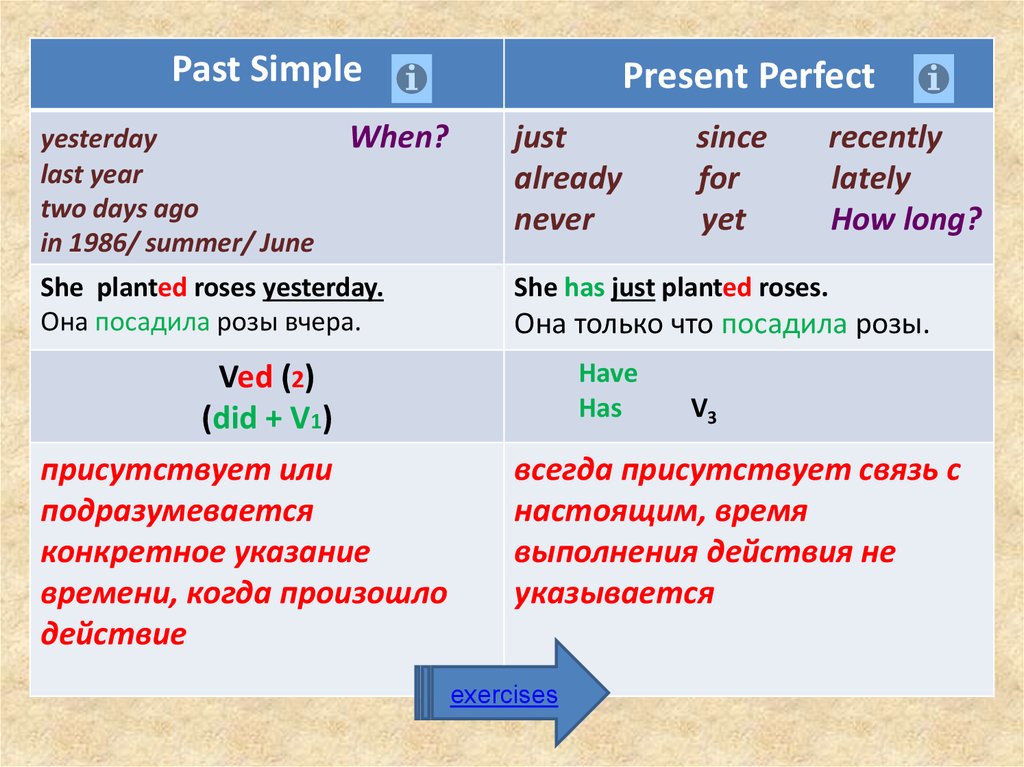

When I woke up this morning, Anne has already eaten her breakfast. For example,Īction 1: Anne ate her breakfast at 7.00 am. Past Perfect tense is used to describe an action that happened before another action in the past. The usage of past perfect is similar to that of the present perfect, but past perfect refers to a time in the past, not present.

She had never seen a tiger until she visited the zoo. I had finished breakfast by the time he arrived. The past perfect tense is formed by adding the auxiliary verb had to the past participle. Present Perfect also describes an action that started in the past and continues to the present. In all the above actions, you can notice that the specific time is not important. She has solved many problems in this project. The invaders have tried to conquer the kingdom five times. Several different actions which have taken place in the past at different times

Scientists have found a cure for this deadly disease. Her French has improved since she moved to Belgium. Present Perfect can be used to talk about an action that has happened before now, that does not include a specific time. In the Present Perfect formation, has or have is used as the auxiliary verb followed by the past participle of the base verb. The main difference between Present Perfect and Past Perfect is that present perfect describes an action that happened in the recent past or an action that started in the past and continues to the present whereas past perfect refers to an action that has happened in the past. There are three perfect tenses in the English language present perfect, past perfect and future perfect. The perfect tenses are the tenses that are used to describe actions that are already completed.


 0 kommentar(er)
0 kommentar(er)
